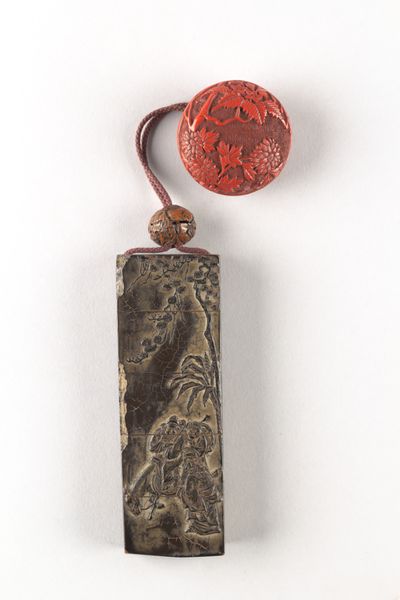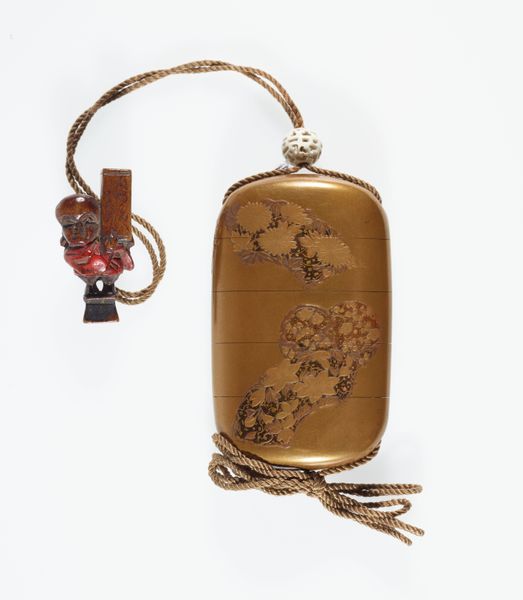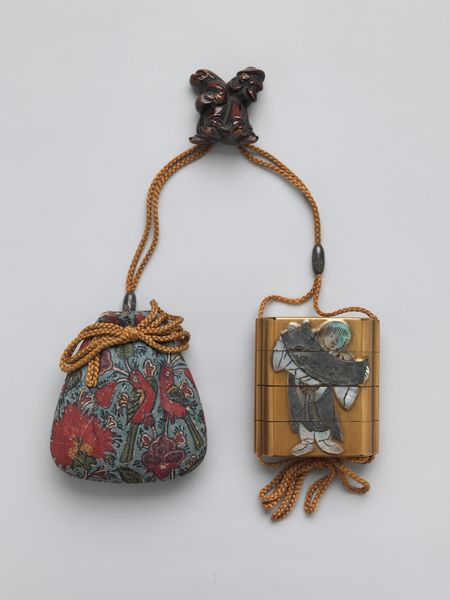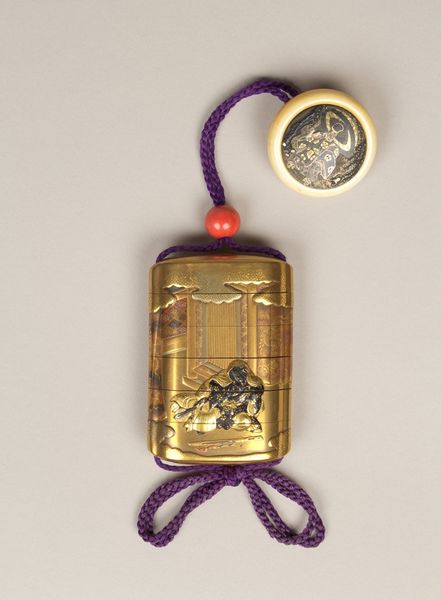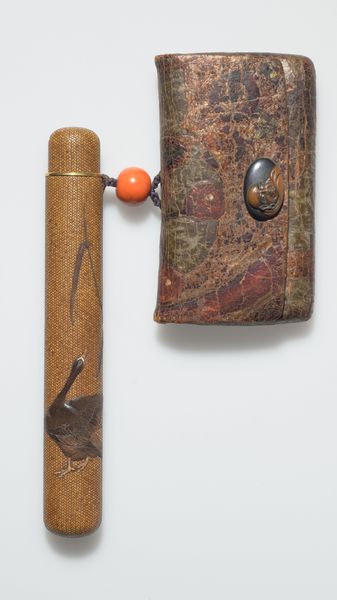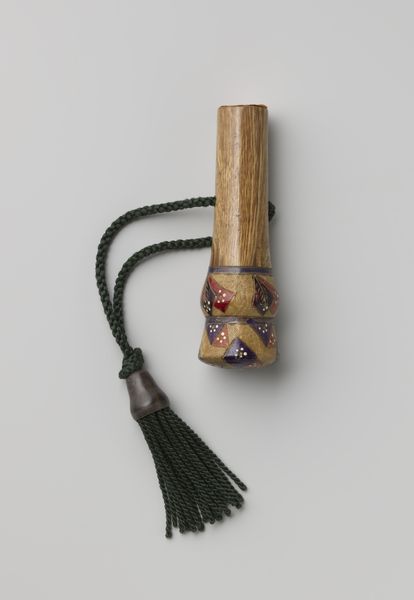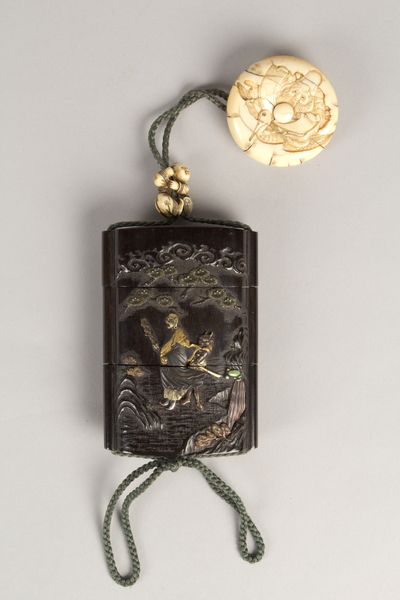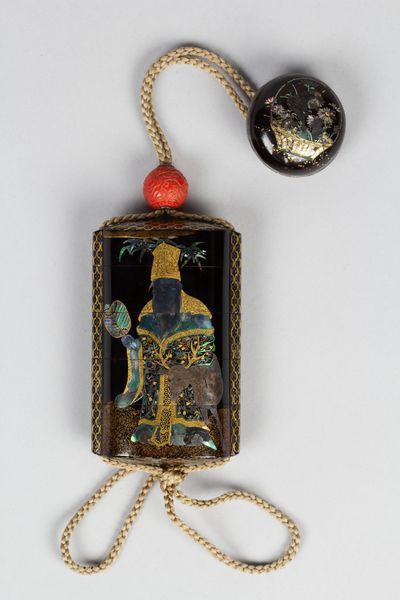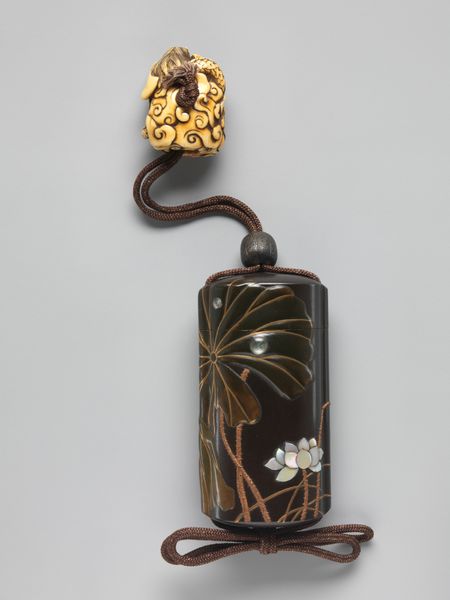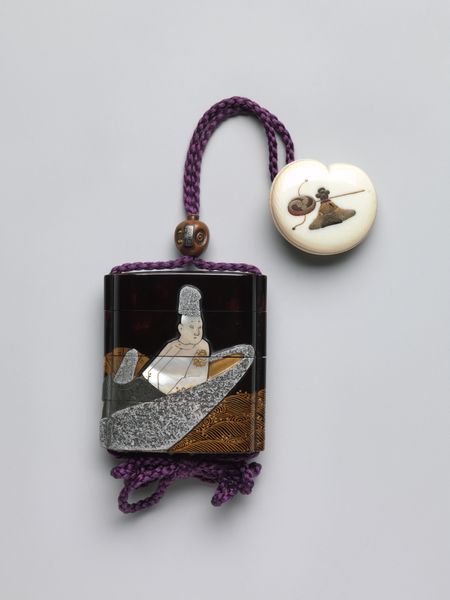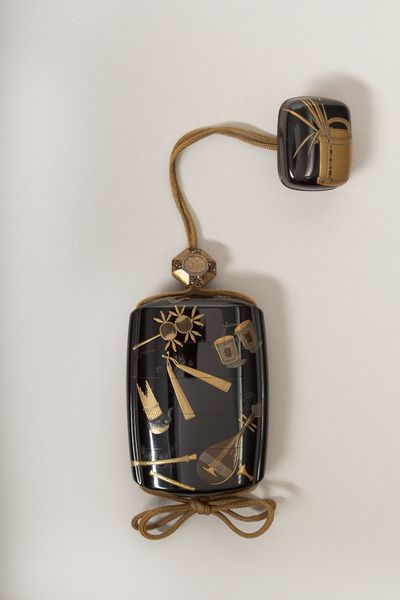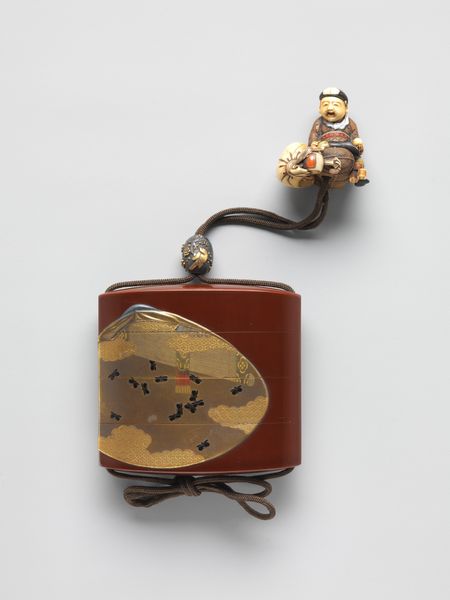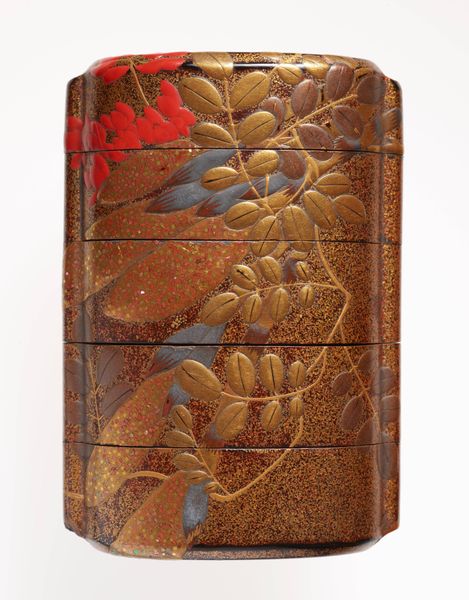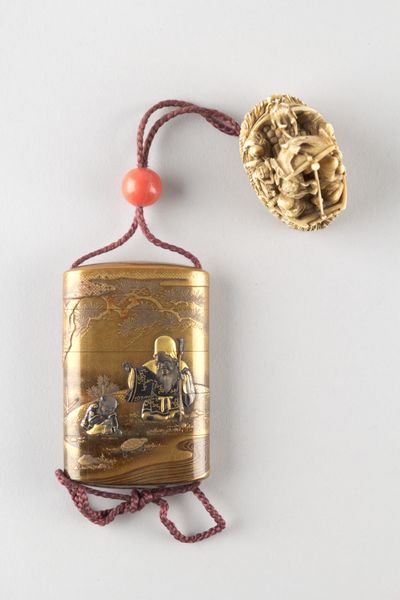
Case (Inrō) in the Shape of Tiered Picnic Box of Cherry Bark with Cherry Blossoms and Butterfly 18th century
0:00
0:00
wood
#
asian-art
#
japan
#
wood
#
decorative-art
Dimensions: H. 3 3/8 in. (8.5 cm); W. 1 3/8 in. (3.5 cm); D. 1 3/8 in. (3.5 cm)
Copyright: Public Domain
Editor: This intriguing object is titled "Case (Inrō) in the Shape of Tiered Picnic Box of Cherry Bark with Cherry Blossoms and Butterfly," made around the 18th century, likely by Kiyokawa. The materials are wood, and it resides in the Metropolitan Museum of Art. I find its intimate scale quite charming and ornate. What is your perspective on this particular work? Curator: Given its historical context, this Inrō is more than just a charming, ornate object. It represents a specific moment in Japanese social history. Inrō, essentially personalized medicine or seal carriers, became important status symbols. Its function was intertwined with social standing. Does the materiality - the cherry bark, the precise depiction of the blossoms and butterfly - suggest anything about the owner's socio-economic position, do you think? Editor: That's a fascinating angle. The cherry bark and delicate designs certainly feel luxurious. Would the owner be a merchant or a noble? Curator: The choice of cherry blossoms and butterflies isn't arbitrary, particularly when we think about the visual vocabulary of the era and how power communicated through it. Cherry blossoms symbolized the fleeting nature of life, popular in the aristocratic class, but butterflies are seen in wider societal contexts, linked to joy. This combination suggests someone with nuanced taste, reflecting on wider cultural symbolism. Can we then consider who controlled these images and to what aim? Editor: It makes sense that owning such an intricate item was a way of making a statement in that society. And I see that by thinking about it as more than just decorative art, we can learn about 18th-century Japanese society and what its values were. Curator: Precisely. These "decorative" pieces held immense social significance, defining identity and power. And museums, in their roles as both stewards and filters of culture, determine whose stories are preserved and how those stories are ultimately told. It challenges us to constantly rethink how these cultural and political roles can inform the public's reception and understanding of art.
Comments
No comments
Be the first to comment and join the conversation on the ultimate creative platform.
